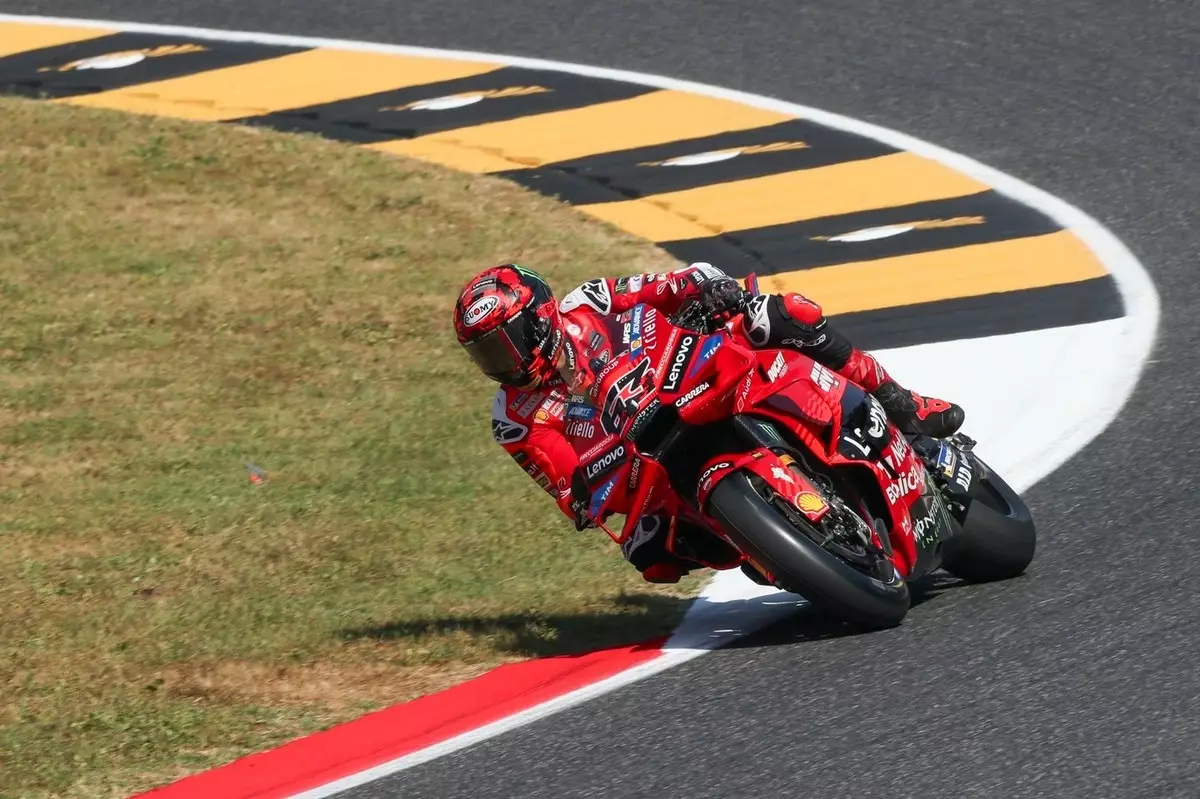This weekend at the prestigious Mugello circuit, the discussion around motorcycle braking systems is reaching a fever pitch. The insights gained from Francesco Bagnaia’s recent switch to larger brake discs have sparked an exhilarating debate among teams, engineers, and fans. However, while many may view a simple increase in disc size as an immediate avenue for enhancing speed and control, the reality is far more nuanced. In a sport where precision engineering meets the raw thrill of racing, there’s always a two-edged sword to consider.
The Weight of Performance
Brembo’s Andrea Pellegrini offers a well-informed take on the situation, highlighting that Bagnaia’s specifications were tailored to the unique demands of the Aragon circuit. Starting with a 340mm disc, he opted for a larger 355mm disc during warm-ups—an adjustment undoubtedly fueled by the immense energy challenges of racing at high-speed. Yet, as the dialogue deepens, one cannot overlook the implications of such changes. Mugello, known for its fast, flowing turns, presents a starkly different set of conditions that do not necessarily favor larger discs.
The decision to swap discs isn’t merely about upgrading. It incurs significant additional weight which ultimately alters the bike’s dynamics. Balancing the performance metrics against the pitfalls is critical, as excessive weight can compromise agility—a cornerstone of success on the racetrack. Is it wise to hinder a rider’s maneuverability for a theoretical increase in stopping power?
The Temperature Dilemma
Temperature management emerges as another crucial aspect of braking efficacy. Pellegrini emphasizes the importance of maintaining disc temperature, illustrating that insufficient heat can massively undermine a bike’s stopping power. The larger the disc, the more complicated temperature control becomes, demanding further equipment adjustments like covers—adding not just weight, but also complexity to race strategies.
The impact that temperature—a factor often overlooked by casual observers—has on racing dynamics cannot be understated. Having the skill to manage thermal conditions is as crucial as technical acumen. At Mugello, the varied braking zones require riders to be not only adept at controlling their bikes but also at anticipating temperature fluctuations to optimize performance. Bridging the gap between raw speed and effective braking requires an intimate knowledge of the bike’s capabilities and the race conditions—a craft that few master.
Strategic Implications for the Racers
As teams prepare for the Italian Grand Prix, the question remains: how should riders weigh the pros and cons of different brake setups? Strategic decisions will define performance on game day, including the critical moment of switching disc sizes during practice runs or the race itself. There’s no one-size-fits-all formula.
Bagnaia’s decisions will undoubtedly impact competitors as they analyze performance data and seek to gain their own edge. The interplay between braking choice and overall racing strategy encapsulates the very essence of MotoGP—innovation, risk-taking, and the relentless pursuit of speed. As the lights prepare to go out at Mugello, each rider’s approach to the intricate ballet of braking may ultimately shape the outcome in this celebrated arena of speed and skill.

